Attention Deficit Hyperactivity Disorder or ADHD is a neurodevelopmental condition that impacts impulse control, focus and organization. Both adults and children can be diagnosed with ADHD and there has been an upward trend in diagnoses.
While there is no general ADHD Diet, nutrition and personalized meal planning in combination with other ADHD treatments can be an effective way to manage ADHD symptoms and their severity.
We sat down with two dietitians who are experienced working in this area. Today we are exploring their approaches, key nutrition considerations for ADHD, and how they use meal planning to help neurodivergent clients.
Jackie Silver is a Registered Dietitian who provides virtual nutrition counseling, consulting services, and educational blog content tailored to the neurodivergent and physically disabled communities through a weight-inclusive lens. Her private practice serves kids, teens, and adults with autism, ADHD, or intellectual/developmental disabilities.
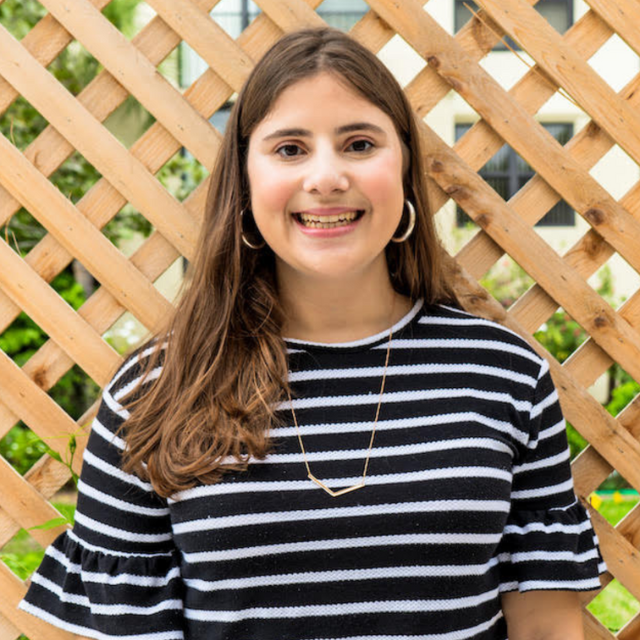
As someone who has ADHD and as a Registered Dietitian Nutritionist in the ADHD space, Becca Harris knows what it’s like to feel different and overwhelmed by everyday tasks. She has dedicated her practice to helping others in the same situation to optimize their health and time in the kitchen.

Understanding a client with ADHD in the initial assessment.
In Becca and Jackie’s initial assessments and planning, they like to meet clients who have ADHD where they’re at.
Becca’s first conversation with the client is about understanding their dietary needs, their relationship with food, their successes with eating, and their struggles. In her intake, she focuses on sensory aspects, textures, aversions, and intolerances.
“With an aversion, oftentimes it's uncovering why they have that aversion and reflecting on what sensory characteristic is unappealing and then diving deeper into the opposite end of what they like about other foods. For instance, if somebody really likes chips but is having a hard time incorporating proteins into their diet we might start with something like crunchy chickpeas.” - Becca Harris
In order to put together a meal plan or recipe collection, Jackie gathers information on the types of cooking equipment her clients have and use, for example, someone might own a blender but not use it as the noise can be too loud for their sensory needs. She also asks about their confidence level in the kitchen and if they have support to assist with cooking. From here, Jackie starts to plan out the types of meals and whether she will repeat them in the week as some clients prefer to batch cook and eat leftovers and some like to eat a new meal every day.
The power of simple, personalized, and flexible nutrition planning.
Once they conduct their assessment, the dietitians determine their client’s readiness for nutrition planning and whether a meal plan or recipe collection is a good fit. They then create a nutrition plan to help them succeed.
When Jackie starts working with a new client, she creates a flexible meal plan, meaning it is not written in stone and can be modified as needed. She teaches clients the skill of meal planning early on to allow a gradual implementation and maintain accountability. Jackie makes the plan as simple as possible and provides just a few recipes at a time to prevent overwhelm.
“I want to create this goal to strive towards, so we start slowly and they have many sessions with me to be kept accountable to. Maybe we'll start with just working on the breakfasts or lunches. Some will implement one recipe at a time instead of all at once.”
- Jackie Silver
Creating a list of ingredients to include and exclude.
As Jackie works to expose her clients to more foods, she asks them what foods they eat and what foods will absolutely not eat. She starts by working with what they're eating and makes small adjustments from there. She will look for recipes with ingredients that are accepted and easy to prepare.
“A lot of my clients will say that chopping vegetables is too many steps. So I'll often recommend pre-chopped veggies or baby carrots, cherry tomatoes, and frozen veggies.” - Jackie Silver
Jackie likes to select simple breakfast recipes with minimal ingredients that can either be stored as leftovers for later in the week or quick options packed with nutrients. She will search for recipes with ingredients like oats or yogurt.
Jackie uses the “include ingredient” filter within That Clean Life so she can easily locate recipes that use a specific ingredient and add them to the plan. The “exclude ingredient” filter is great for clients with food aversions or intolerances as it helps to eliminate recipes with certain ingredients.
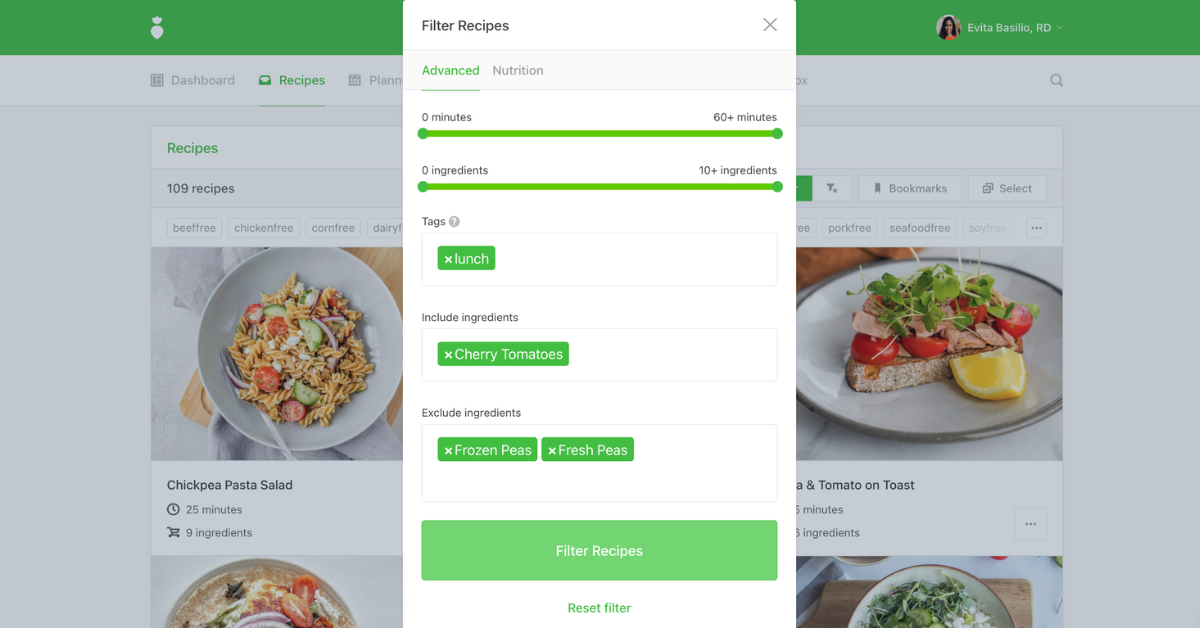
After working with many picky eaters with autism and/or ADHD, Jackie has learned that smoothies are hit or miss. For clients that love smoothies, Jackie uses the “smoothie” tag within That Clean Life to find ample options.
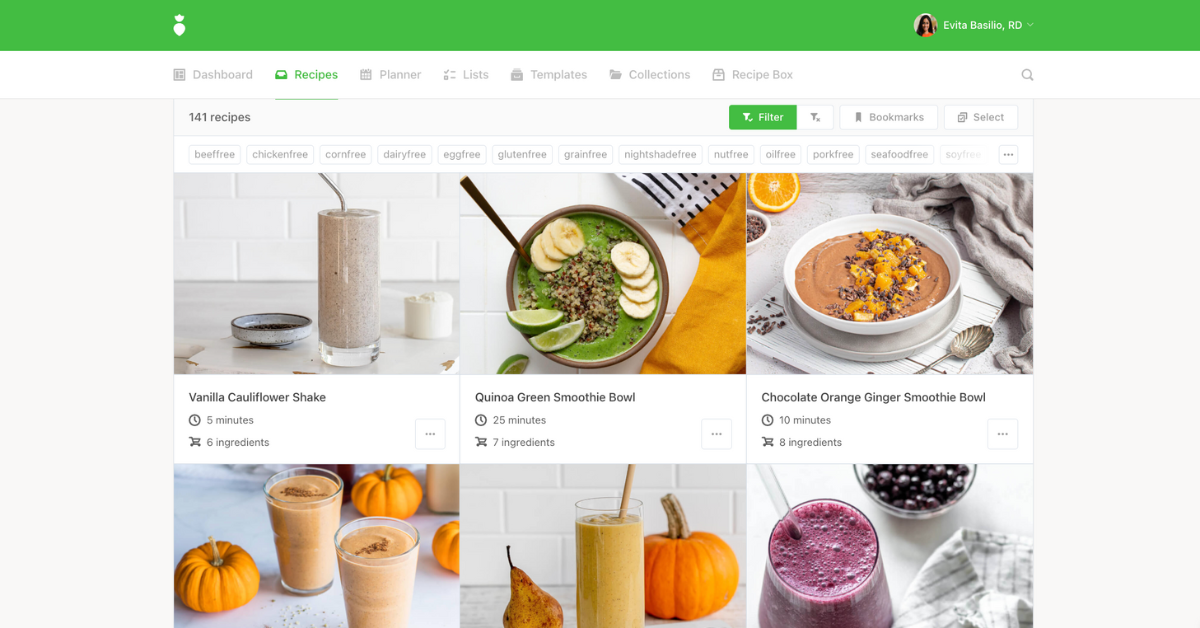
Finding recipes with minimal ingredients and preparation time.
Becca likes to take the recipes that a client currently makes and then add on, for example, a different type of protein. She often looks for recipes with minimal ingredients and minimal preparation time.
Jackie also finds that simple recipes are key and says finding options like two-ingredient snacks that clients can prep ahead of time is very helpful.
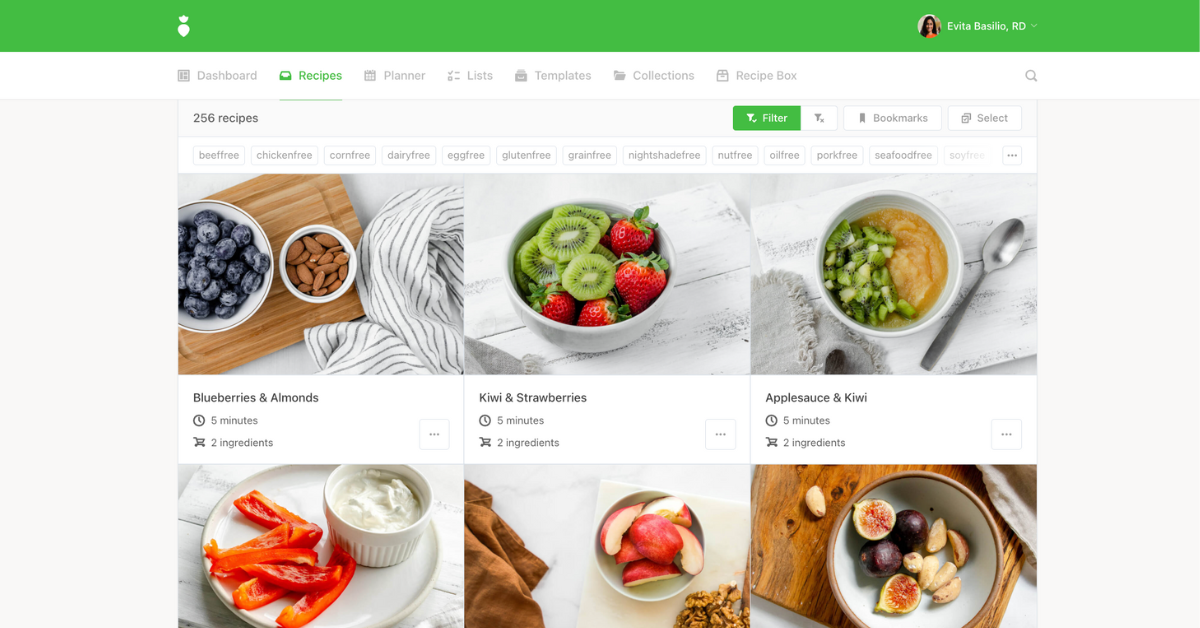
Finding recipes based on cooking equipment.
Jackie often uses the “airfryer”, “onepan”, “pressurecooker” and “slowcooker” tags within That Clean Life to find recipes that use cooking equipment her clients are comfortable with and meals they can prepare in one dish or pot.
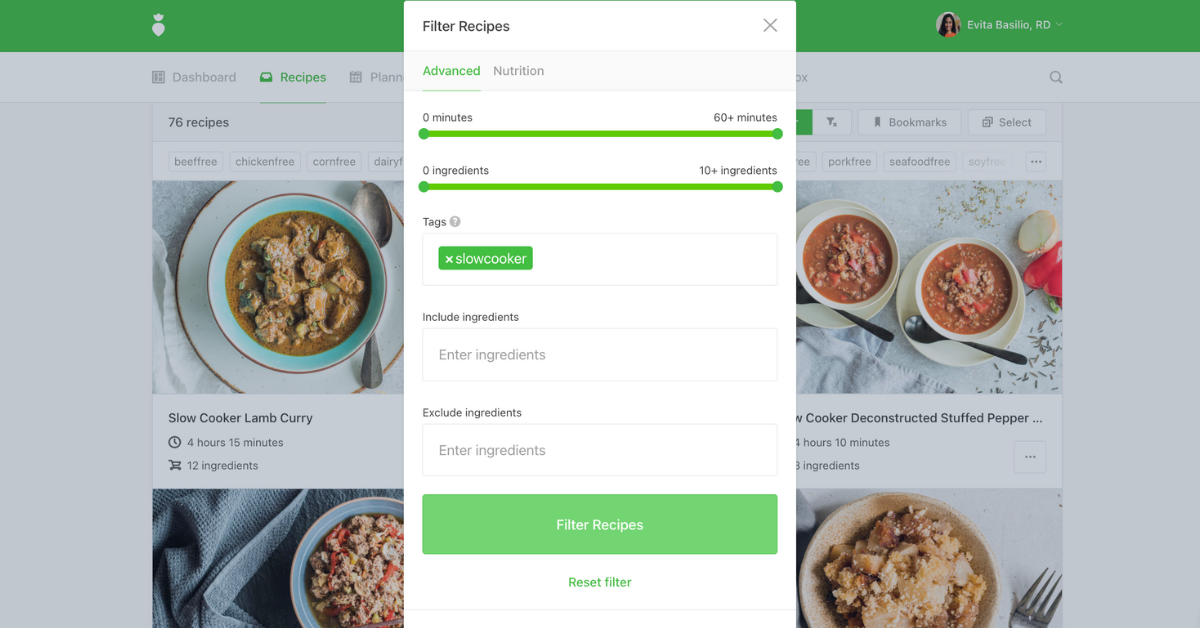
Incorporating cultural meals.
Jackie asks her client if there are cultural foods that they usually eat and aims to incorporate cultural preferences into her plans.
That Clean Life offers several cultural tags including African, Asian, Caribbean, Indian, Latin, and Middle Eastern, and develops recipes from various cuisines that use a variety of ingredients to help offer nutrition guidance to different cultures and ethnicities.
Searching for meals based on nutrients.
That Clean Life’s nutrient filters make it easy to find recipes with key nutrients in ADHD meal planning like high protein, high fiber, and micronutrients like iron, zinc, and magnesium.
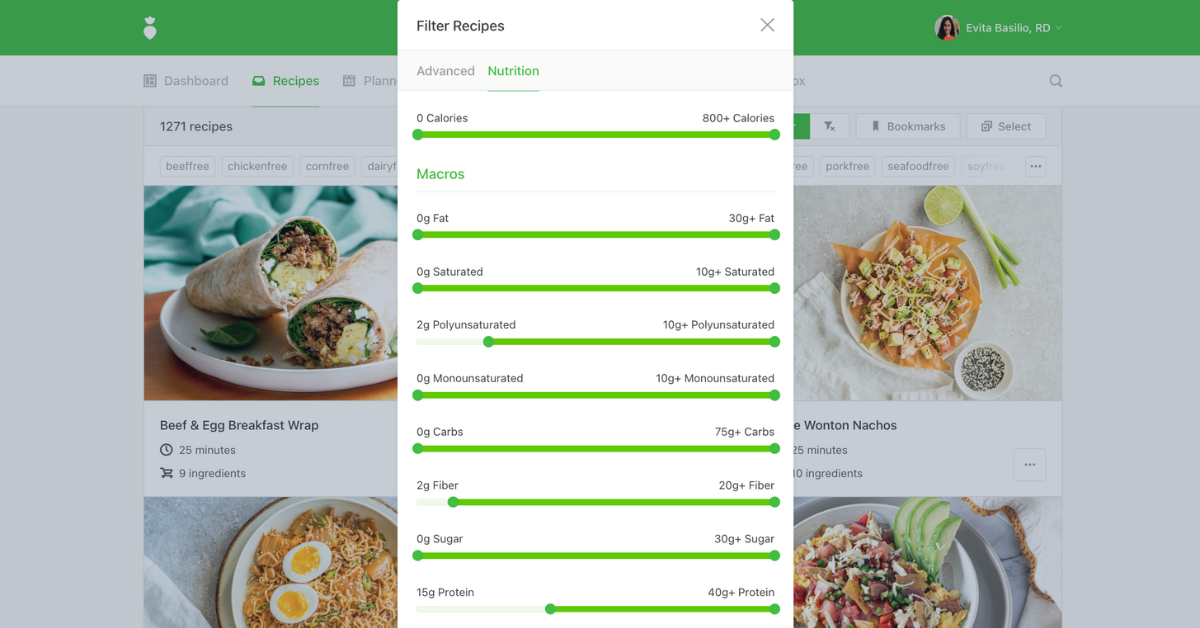
Finding freezer-friendly meals for leftovers.
Every client needs a personalized approach when it comes to organizing their meal plan and allocating leftovers. Jackie says some clients prefer frozen, grab-and-go options like muffins that can be kept in the freezer. Becca has found freezer-friendly meals helpful for her clients.
“One thing that has really been incredibly beneficial to me is meal prep and freezing foods. We'll look at things like chili shredded chicken which is so simple to make ahead, then defrost it and have a really good hearty meal.” - Becca Harris
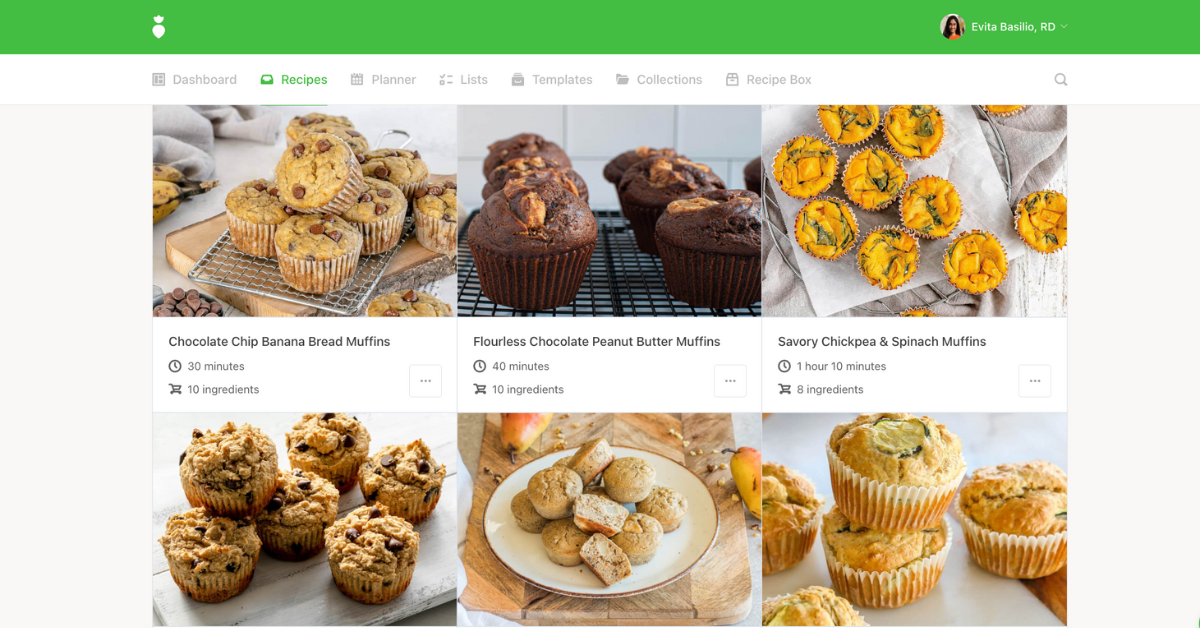
Provide a prep guide.
Along with a meal plan, Jackie provides a prep guide that lays out the exact steps the client must take to put their meal plan to use. It breaks the client's week down day by day so that they know exactly when to cook, what to make, and what to do with leftovers.
“My clients find the prep guides really helpful because it’s really detailed and they know exactly what they need to do.” - Jackie Silver
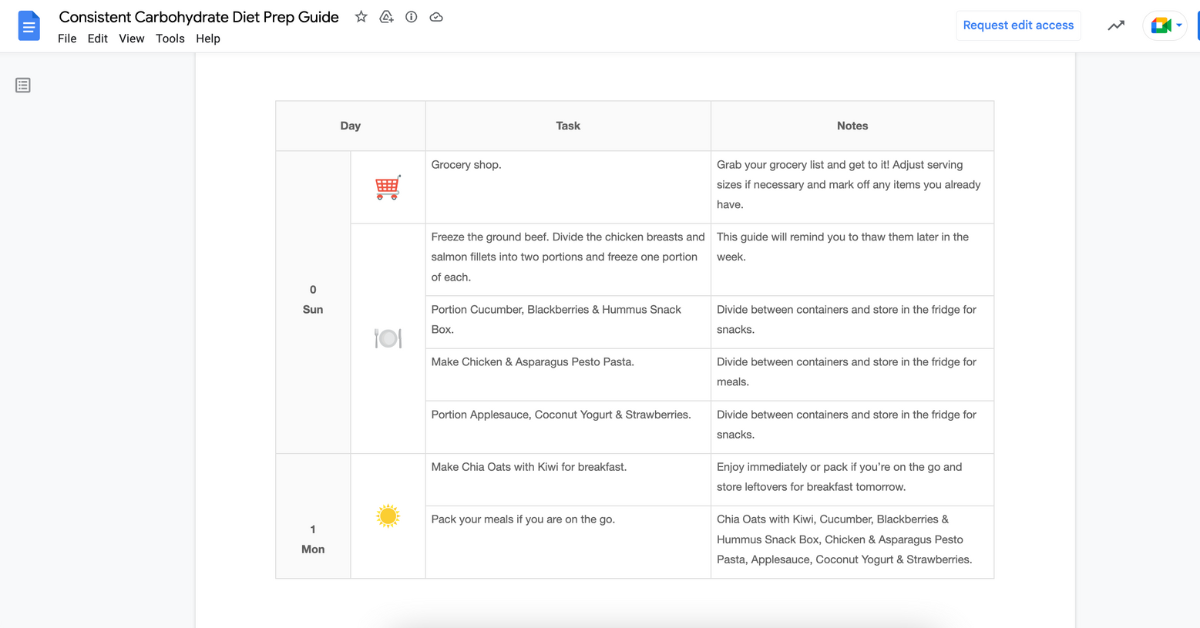
Tip: Read How to Make Prep Guides for Your Client's Meal Plans
Adding strategies to implement the meal plan.
Becca recommends having the client’s plan on their fridge so they can keep track and set alarms or check in with themselves every two to four hours to make sure they’re eating consistently.
“Setting alarms is one of the biggest hacks in working with the ADHD population because a lot of times clients can go a very long time without thinking about food and it's not because they're not hungry, it's because they're quite simply not in tune with their hunger cues.” - Becca Harris
Jackie’s clients sometimes use whiteboard stickers where they write down what’s in the refrigerator and freezer to stay organized and prevent food waste.
As someone with ADHD, Becca has found meal planning, grocery shopping and prep beneficial in both her and her clients’ lives.
“Sometimes it is just pre-planning, pre-thinking about the easy things that you can make and having those ingredients on hand.”
- Becca Harris
The role of meal planning in ADHD.
Having ADHD makes it challenging to plan and prepare foods due to executive dysfunction, which impairs goal-directed behavior.
Becca finds that making meals requires decision-making, planning, budgeting, prioritizing, following directions, and organization – all skills that fall under the umbrella of executive function. This is where meal planning can help.
“Regulation issues might include your ability to make decisions, control impulses, or manage your time. Organizational issues might include planning or paying attention when you're completing a task. These things combined can make food planning and preparation extremely difficult.” - Becca Harris
For clients who are interested in the meal planning process, Becca says it can really set a client up for success and help them be more mindful. She creates flexible plans with recipes that her clients are familiar with and motivated to make.
“If you have a plan you can think about things a little bit more and be more mindful to check in with yourself throughout the day.”
- Becca Harris
In Jackie’s experience, clients with ADHD can often get overwhelmed with decision paralysis and go hours without eating when there isn’t a plan in place. And with certain medications which suppress appetite, a consistent eating schedule can help prevent binge eating later in the day.
“Being prepared for those moments is a big thing. If they're on stimulant medications, I get them eating on a consistent schedule, simplifying meal prep, and learning to tune into their hunger and fullness as interoception is often missing with autism and ADHD and the medications make it even harder.” - Jackie Silver
Jackie makes the meal planning process as simple as possible and finds that clients like the structure it provides, recipe inspiration, and accountability. She uses That Clean Life with most of her clients and chooses recipes that interest them.
“A lot of clients need and thrive off of structure. It gives them recipe inspiration, something to be accountable to and to work towards. Having a plan keeps them nourished throughout the day. It reminds them that they need to eat three meals a day and not go six hours without eating anything. It also gives them a guide for how they could continue to meal prep and plan when we're done working together.” - Jackie Silver
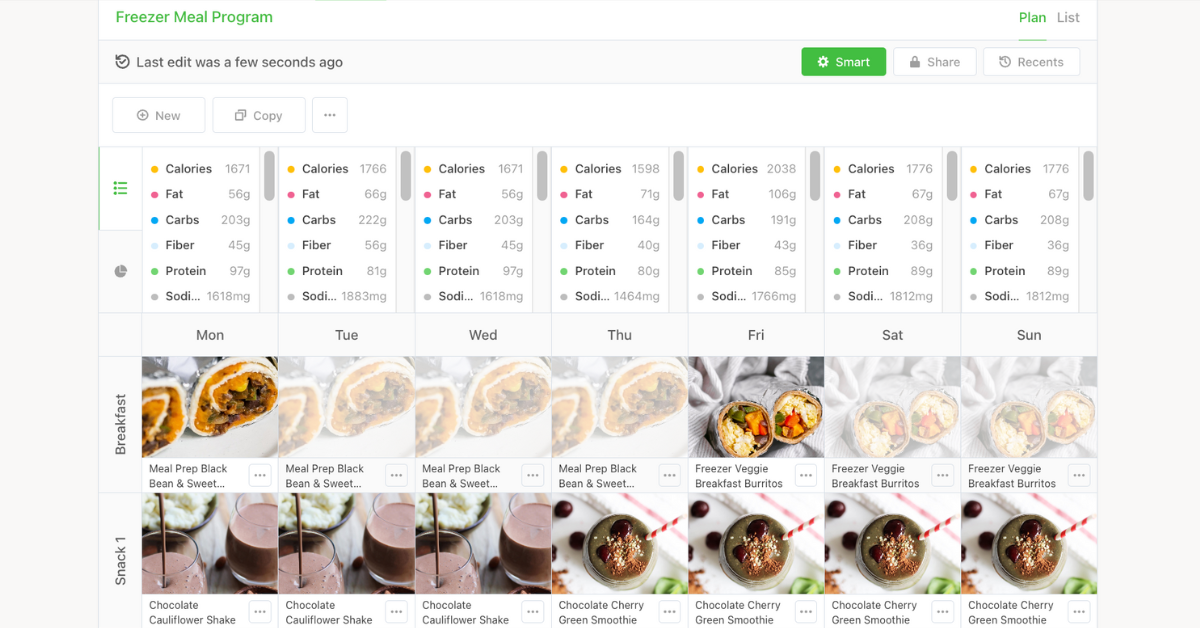
Key nutrition considerations with ADHD.
Jackie and Becca both take a personalized and collaborative neurodivergent-affirming approach in their nutrition therapy celebrating the diversity of how brains work. Jackie’s clients consist of kids, teens and adults, and Becca mainly sees adult clients.
Nutrition for kids and teens with ADHD.
Many of the kids Jackie counsels are on stimulant medications that suppress appetite and can result in poor growth. She teaches parents how to increase the calories and protein in their child’s diet. She also teaches kids a simplified version of the hunger and fullness scale so they can recognize the times when they're most hungry and when their appetite is lowest.
Jackie will sometimes see an overlap in her client populations of ADHD and autism. With this overlap of conditions, picky eating and sensory issues with food are prevalent, so she works with families on expanding their diet. A strategy she’s currently learning more about is the Sequential Oral Sensory (SOS) approach which helps children progress with eating various food textures. Jackie also works on incorporating food chaining into her nutrition plan. This approach helps introduce new foods while building on past successful eating experiences.
Next, Jackie works on helping parents create structure and peace around mealtimes, which can often be stressful.
“We work a lot on mealtime peace so that the parents are not as stressed and this makes the child less stressed and then more likely to eat.” - Jackie Silver
Nutrition for adults with ADHD.
Becca has found a high prevalence of malnutrition in ADHD clients, for both under and overnutrition.
“ADHDers may have a lack of appetite due to distractability, not feeling their hunger cues, or because of certain medications that are used to treat ADHD symptoms. A lack of appetite throughout the day is unfortunately often paired with things like binge eating behaviors later in the day which are more likely to occur if you haven't eaten all day or if you're on medication.” - Becca Harris
Food aversions can cause nutrient deficiencies and low energy. Becca focuses on the following key nutrients when putting together her plans:
- Protein, which is used to make neurotransmitters in the brain that can help improve ADHD symptoms like focused attention.
- Omega 3 fatty acids, which can improve symptoms like hyperactivity and inattention.
- Iron, which is a common deficiency in the ADHD population.
When working with adults, Jackie chooses high-fiber foods to assist with bowel movements and includes protein in all meals and snacks to help clients stay focused throughout the day. Jackie also finds that clients may struggle with not knowing their hunger cues, so a strategy she teaches is mindful eating.
Building a therapeutic relationship with clients who have ADHD.
Jackie and Becca both demonstrate how consistent and balanced nutrition can have a positive effect on ADHD symptom management. Personalized planning is a key part of it and this is where nutrition professionals can make an impact.
One of the best things that Becca hears from her clients is that they're so relieved they don't have to over-explain or rationalize their eating habits to their dietitian as they often have to do with other medical professionals. Jackie has had a similar experience with her clients reporting medical gaslighting and not being able to advocate for themselves.
In order to foster a trusting relationship and help with improved nutrition outcomes, Becca recommends nutrition professionals working in this area have an understanding of the condition and how it impacts nutrition.
Jackie would love to see more practitioners working with neurodivergent clients. She recommends taking a sensitive and compassionate approach, learning about what neurodiversity is and celebrating it.
To learn more from these dietitians:

